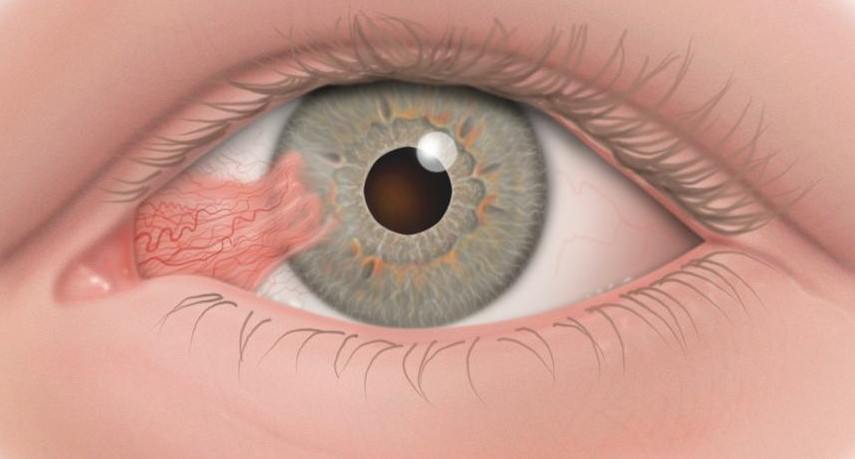
A pterygium is a red and white abnormal growth of the conjunctiva that invades the cornea, most frequently on the side which is closer to the nose, although it can also appear on the external side of the eye, and in both eyes.
It is painless and symptoms vary depending on the injury extent. Therefore, the more it grows, the more discomfort (such as tearing, redness and foreign body sensation) it causes on the eye surface. In the most severe cases, when it covers a wider area of the cornea, it may cause astigmatism and vision may be compromised
Pterygium cause is unknown, although the main risk of pterygium development is a long exposure to solar radiation and dryness. Therefore, it occurs most usually in people who spent long periods of time outdoors, in sunny, warm or windy climates. Pollution, dust, dirt and exposure to allergens and chemicals also seem to be related to its appearance.
This makes prevalence of the disease largely vary depending on the geographical area. In some regions, it may even affect a considerable proportion of population.
Diagnosis does not usually require special examinations, and it is often confirmed with a simple physical examination of eyes and eyelids.
In the case of small-sized pterygiums, it is usually not necessary to follow any treatment, although some eye drops that moisturize the eyes and reduce discomfort may be used. However, there is no medicine-based treatment able to eliminate it. Therefore, in case it grows and affects vision, it will be necessary to undergo a surgical intervention aiming to remove the affected part of the conjunctiva and replace it by healthy tissue of the patient’s conjunctiva (conjunctival autograft). This surgery needs to be performed with great care in order to fully eliminate the pterygium and prevent it from reproducing itself again.
Best way of prevention is to protect ourselves from UV rays which are a risk factor for the development of pterygium, as well as from other elements related with such development.
Moreover, in case of suffering a non-surgical pterygium, it is necessary to go to regular ophthalmological examinations in order to ensure it does not grow and make sure the intervention is still unnecessary. Furthermore, in case it develops, this examinations will help detect it in time before it affects vision.
Also, people who have previously suffered from a pterygium will need to be careful and quickly go to the ophthalmologist in case symptoms reappear.

Contact us or request an appointment with our medical team.